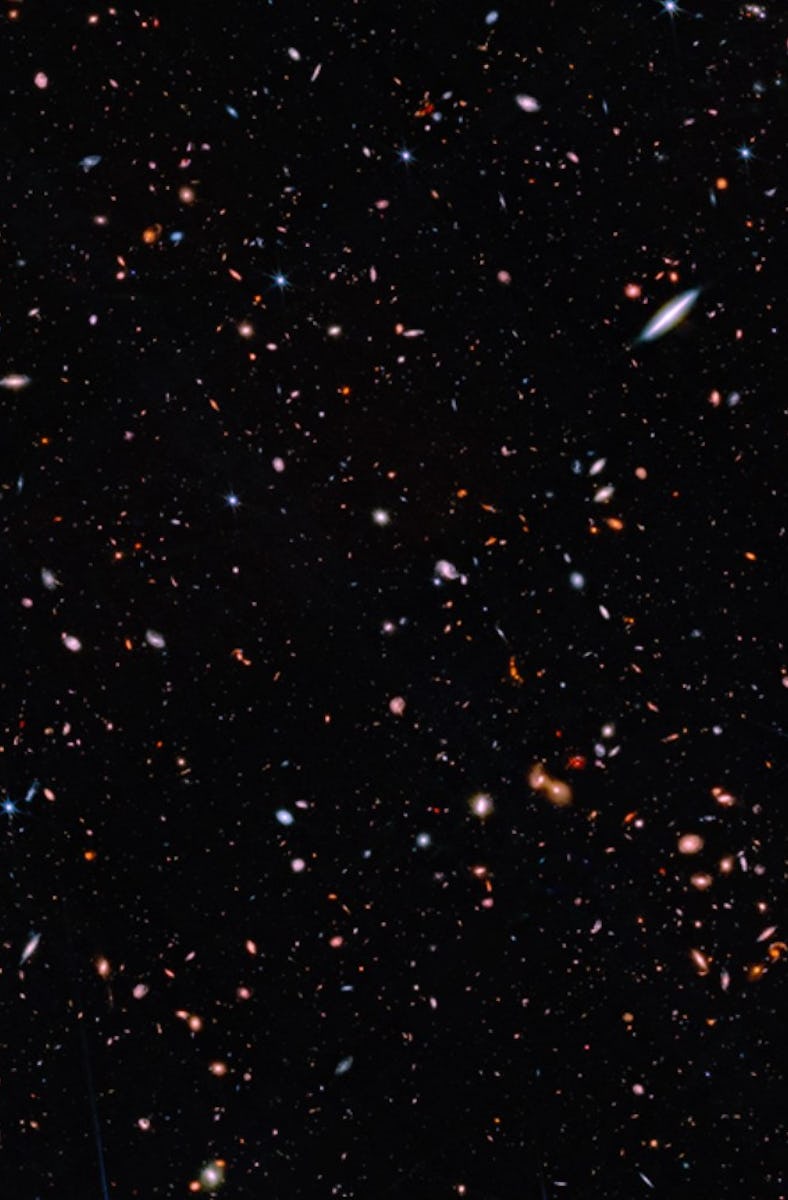Webb Telescope Finds Complex Carbon in the Early Universe, Baffling Astronomers
This cosmic dust dates back to when the universe was five percent its current age.

Billions of years before creatures big and small arose on this planet, the molecular building blocks of life drifted across the universe.
These complex carbon molecules of the ancient past are beginning to appear unto the ultrasensitive instruments aboard the James Webb Space Telescope (JWST). And when this cosmic dust reveals itself, as it does in a new study published Wednesday in the journal Nature, scientists are seeing symptoms of what was going on when the universe first evolved into how it looks today. And as an added bonus, the cosmic dust reveals a through line between modern Earth and Cosmic Dawn.
As often is the case, sometimes science raises more questions than it answers. The new research, helmed by cosmologist Joris Witstok, found evidence for complex carbon molecules dating as far back as when the universe was just 5 percent its current age, about 700 million years after the Big Bang. The finding can deepen the scientific portrait of where these crucial molecules were first forged. But simultaneously, it raises questions about how fast and how early the universe generated the stars living inside the early galaxies.
A portion of the sky revealed through the JADES program, short for JWST Advanced Deep Extragalactic Survey.
Peering into ancient dust
Between October 21 and 25, 2022, JWST observed 253 sources with two of its instruments designed to pry apart the light pooled from great distances. Researchers then studied the data to narrow down the chemical composition of that distant source. Each object received exposure times ranging from 9.3 hours to 28 hours, according to the paper.
Within this light from the early universe, researchers found an ultraviolet light attenuation “bump.” This feature in the data is associated with the presence of complex, carbon-based dust grains.
These dust particles are smaller than the everyday dust we deal with in our daily lives, according to JWST scientist and paper co-author Irene Shivaei. Yet, these ancient grains are complex enough to suggest that stars were churning at earlier time periods than models suggest.
The team performed this work through a collaboration known as JADES, short for JWST Advanced Deep Extragalactic Survey, an initiative Witstok says is “really aimed at extragalactic science.”
Revelations and questions
Seeing this dust so far back in time was a big surprise, Shivaei tells Inverse via email.
This cosmic dust is found just 700 million years after the Big Bang; for perspective, the Universe is about 13.7 billion years old. The dust that produced the ultraviolet “bump” in JWST data heralds from an era called Cosmic Dawn, or the Reionization Era. As the National Science Foundation describes it, this is the time when stars “turned on” for the first time.
Astronomers do expect to find dust and elements heavier than hydrogen and helium in the early universe. But the ultraviolet data suggests these complex dust grains were surprisingly abundant and arising earlier than predicted. One possibility is that the carbon grains are forming on short timescales.
“I think that’s quite special to see, that we’re really able to reach the origins of one of the most important building blocks, or types of material that eventually would form stars and also for example the planets in our Solar System,” Witstok tells Inverse.
What comes next
The dust is special because it is complex, and formed via certain paths. According to Shivaei, the stars living in the ancient galaxies must have evolved enough to produce these complex grains. And according to the paper, the reservoirs of cosmic dust were as large as 100,000,000 times the mass of the Sun.
“This is in tension with the theories and the time available to the stars to evolve in early galaxies,” Shivaei says.
A next step could involve consulting theorists to form more accurate models about how the dust’s presence can constrain certain details of Cosmic Dawn, and narrow down what astronomers think happened when galaxies first began to evolve.
Thankfully, astronomers have a great tool at their fingertips. Shivaei says, “JWST has opened a new window to our understanding of the universe.”